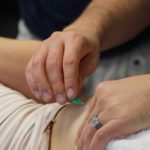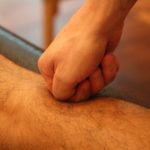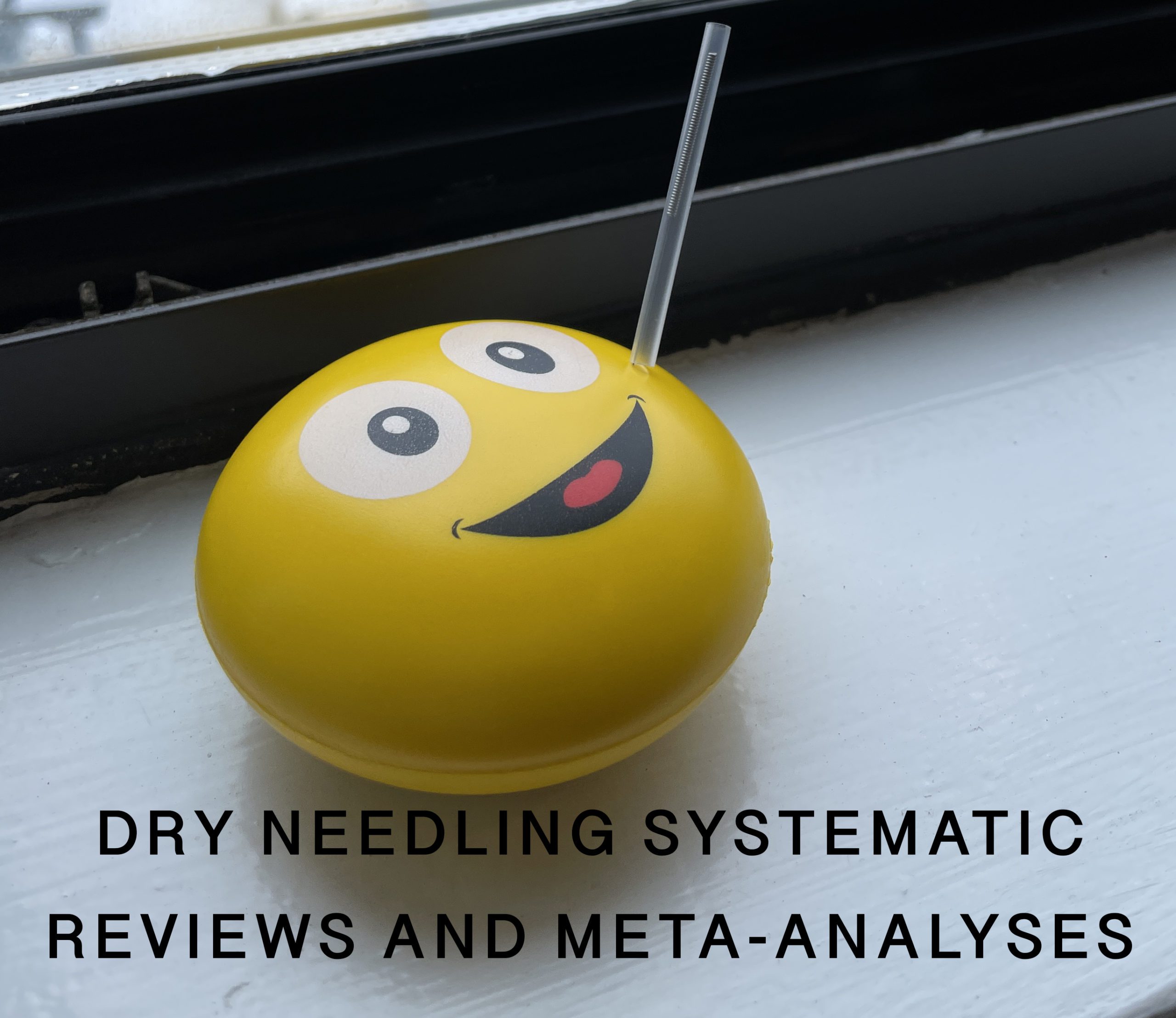In an evidence-informed healthcare model, clinicians integrate the best available research with clinical expertise and patient values.1 As it is impossible to keep abreast of all published research on a particular topic, new innovations and progress in a particular field are provided by systematic reviews (SR) and meta-analyses (MA).2 A systematic review can be defined as, “the application of scientific strategies that limit bias by the systematic assembly, clinical appraisal, and synthesis of all relevant studies on a specific topic.”3 SRs use pre-specified research questions and protocol-driven methods.4 A meta-analysis (MA) uses statistical techniques in an SR to integrate the results of included studies to conduct statistical inference.1 In other words, a meta-analysis is the statistical combination of results from two or more separate studies. If performed properly, for example, with consideration of potential biases, a MA can answer questions that individual studies did not consider and improve the accuracy of the assessment.4
Health decision-makers may access up-to-date and high-quality information provided by systematic reviews.4 For example, insurance companies may use SRs and MAs to determine whether certain treatment approaches should be considered for payment. If SRs and MAs provide ample scientific evidence that a procedure of treatment does improve certain clinical conditions, such as cervicogenic headaches, neck pain, spasticity, or other musculoskeletal ailments, insurance companies should encourage clinicians to use those procedures and treatments as not only patients will benefit directly, insurance companies will save money. Ineffective treatments, considered experimental interventions, are costly to insurance companies, patients, and society at large.
 Although adding dry needling to a comprehensive physical therapy treatment regimen may be less costly than the same approach without dry needling,5 many insurance companies do not cover dry needling as from their point of view, dry needling is an experimental or investigational procedure.6 As an example, in 2016, Blue Cross Blue Shield of Rhode Island issued a Medical Coverage Policy on Dry Needling of Myofascial Trigger Points denying coverage because “evidence is insufficient to determine the effects of the technology on health outcomes.”7 The policy, which was updated in 2019, included a few randomized controlled trials, but no SRs and MAs.
Although adding dry needling to a comprehensive physical therapy treatment regimen may be less costly than the same approach without dry needling,5 many insurance companies do not cover dry needling as from their point of view, dry needling is an experimental or investigational procedure.6 As an example, in 2016, Blue Cross Blue Shield of Rhode Island issued a Medical Coverage Policy on Dry Needling of Myofascial Trigger Points denying coverage because “evidence is insufficient to determine the effects of the technology on health outcomes.”7 The policy, which was updated in 2019, included a few randomized controlled trials, but no SRs and MAs.
Blue Cross BlueShield of North Carolina (BCBSNC) updated its Corporate Medical Policy – Dry Needling of Myofascial Trigger Points in September 2020 and concluded that “dry needling of trigger points for the treatment of myofascial pain is considered investigational for all applications. BCBSNC does not provide coverage for investigational services or procedures.”8 The policy does state that the references in support of the policy were updated on October 1, 2020, but does not include the actual references. The justification to deny coverage is remarkably similar to the justification offered by Blue Cross Blue Shield of Rhode Island. Many other insurance carriers have similar policies in place.
In 2018, the American Physical Therapy Association (APTA) and the American Chiropractic Association (ACA) collaborated and submitted a proposal to the CPT® Editorial Panel to include specific CPT codes for dry needling. Jan Dommerholt was a member of the committee developing the proposal. As of January 1, 2020, codes 20560 (Needle insertion(s) without injection(s), 1 or 2 muscle(s)) and 20561 (Needle insertion(s) without injection(s), 3 or more muscle(s)) are included in the CPT Code Book. At first glance, it would appear that the Centers for Medicare & Medicaid Services (CMS) provides coverage for dry needling at least for chronic low back pain, as a search of the CMS database shows that “for dates of service on or after 01/01/2020, dry needling should be reported using CPT codes 20560 or 20561. Effective January 21, 2020, Medicare will cover all types of acupuncture including dry needling for chronic low back pain within specific guidelines in accordance with NCD 30.3.3.”9 However, NCD 30.3.3 does not pertain to physical therapists or, for that matter, to most licensed acupuncturists, as only physicians, physician assistants, and nurse practitioners “may furnish acupuncture.” Physician assistants and nurse practitioners must possess “a masters or doctoral level degree in acupuncture or Oriental Medicine,” or “a current, full, active, and unrestricted license to practice acupuncture in a State, Territory, or Commonwealth.”10
Even the TRICARE Health program used throughout the U.S. Department of Defense health care system does not offer coverage for dry needling if it is the sole reason for a visit to a physical therapist. According to the Revised TRICARE Policy Manual published in February 2020, “dry needling (DN) is considered unproven.”11 In fairness to TRICARE, “if a physical therapist provides DN in the course of an otherwise-covered physical therapy session/visit, TRICARE may cost-share the cost of the covered care.”11
Since 2019, as many as eleven systematic reviews and meta-analyses have been published about dry needling!12-22 Prior to 2019, several other dry needling systematic reviews and meta-analyses have been published, but mostly because of a limited number of randomized controlled dry needling studies, the results of the older papers were rather mixed. Griswold et al. evaluated the effects of deep versus superficial dry needling or acupuncture on pain and disability for spine-related painful conditions.18 They determined “a consistent effect supporting deep needling over superficial with an SMD of 0.585 [0.335, 0.835], p < 0.001 from 10 articles for pain but a nonsignificant effect of 0.197 [−0.066, 0.461], p = 0.14 from 2 studies for disability.18
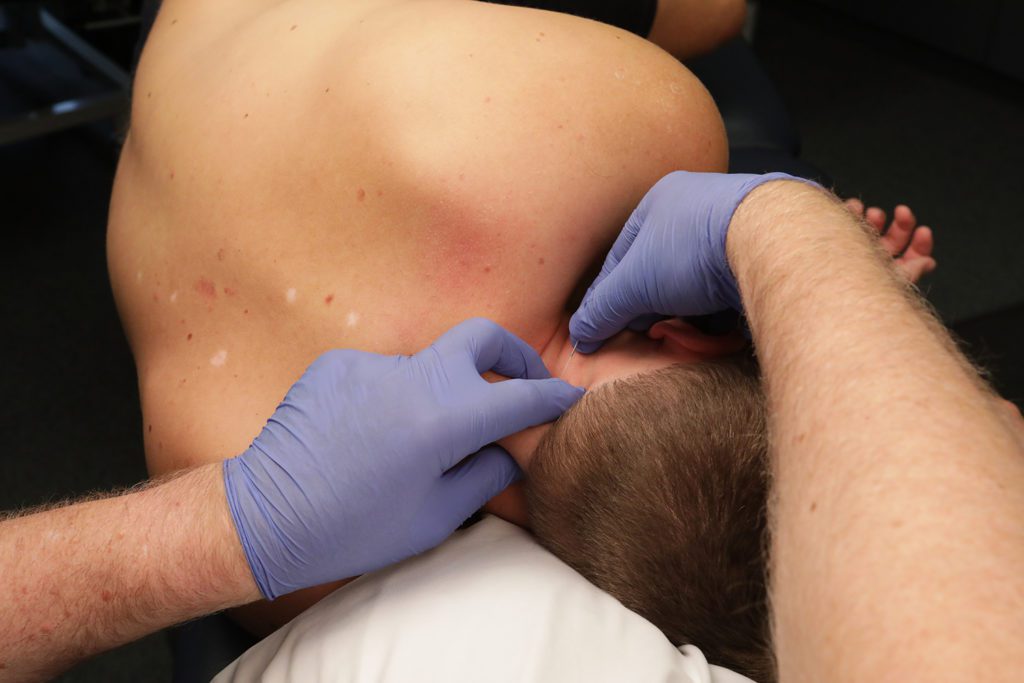 Fernández-De-Las-Peñas and colleagues conducted a systematic review and meta-analysis of dry needling of trigger points in combination with other therapies for neck pain.12 In their conclusion, they described that low-to-moderate evidence suggests a positive effect to the combination of dry needling with other interventions for improving pain intensity, pain-related disability, pressure pain thresholds, and cervical range of motion in people with neck pain associated with TrPs at short-term. However, they did not observe midterm or long-term effects based on the included studies.12
Fernández-De-Las-Peñas and colleagues conducted a systematic review and meta-analysis of dry needling of trigger points in combination with other therapies for neck pain.12 In their conclusion, they described that low-to-moderate evidence suggests a positive effect to the combination of dry needling with other interventions for improving pain intensity, pain-related disability, pressure pain thresholds, and cervical range of motion in people with neck pain associated with TrPs at short-term. However, they did not observe midterm or long-term effects based on the included studies.12
In another systematic review and meta-analysis of dry needling for the management of spasticity, Fernández-De-Las-Peñas et al. concluded that moderate evidence suggested a positive effect of dry needling on spasticity in the lower extremity in post-stroke patients, while the effects on related pain and motor function were inconclusive.13
Rahou-El-Bachiri and colleagues studied the effects of trigger point dry needling for the management of knee pain syndromes and concluded that “low to moderate evidence suggests a positive effect of trigger point dry needling on pain and related disability in patellofemoral pain, but not knee osteoarthritis or post-surgery knee pain, at short-term.17
Another systematic review and meta-analysis focused on the effects of trigger point dry needling on lateral epicondylalgia of musculoskeletal origin. Navarro-Santana and colleagues assessed the risk of bias by the Cochrane Guidelines, and the methodological quality with the PEDro score, and the quality of evidence by using the GRADE approach. Seven studies including 320 patients with lateral epicondylalgia were included. In summary, the meta-analysis found that dry needling reduced pain intensity and related-disability with large effect sizes and increased pressure pain thresholds with a large effect size and grip strength with a small size effect compared to a comparative group. The risk of bias was generally low, but the heterogenicity of the results downgraded the evidence level. Low to moderate evidence suggested a positive effect of dry needling for pain, pain-related disability, pressure pain sensitivity, and strength at short-term in patients with lateral epicondylalgia of musculoskeletal origin.20
Sarmiento-Hernández and colleagues conducted a systematic review and meta-analysis on the effectiveness of invasive techniques in patients with fibromyalgia. Invasive techniques, including dry needling and acupuncture, produce a significant decrease in the pain, the impact of fibromyalgia, and the pain pressure threshold, and improved the quality of life.21
Lew and colleagues compared dry needling and manual trigger point therapy for reducing pain and improving function. Six randomized controlled trials with 241 participants total were included in this systematic review. The researchers concluded that dry needling and manual trigger point therapy were effective in improving pain and function in the short to medium term.
Navarro-Santana et al. concluded in their updated systematic review and meta-analysis of the effectiveness of dry needling for myofascial trigger points associated with neck pain symptoms, that “low to moderate evidence suggests that dry needling can be effective for improving pain intensity and pain-related disability in individuals with neck pain symptoms associated with trigger points at the short-term. No significant effects on pressure pain sensitivity or cervical range of motion were observed.” When compared to sham, placebo, a waiting list, or other forms of dry needling, trigger point dry needling reduced pain immediately after and at short-term and, also compared with manual therapy.
The Physical Therapy & Rehabilitation Journal has published three systematic reviews and meta-analyses, which currently are still “in progress” but already available online:
- Navarro-Santana et al. studied the effects of trigger point dry needling for non-traumatic shoulder pain of musculoskeletal origin. Their conclusions: “moderate- to low-quality evidence suggests positive effects of TrP dry needling for pain intensity (small effect) and pain-related disability (large effect) in non-traumatic shoulder pain of musculoskeletal origin, mostly at short term.”14
- Sánchez-Infante et al. conducted a systematic review and meta-analysis exploring whether dry needling by physical therapists is effective for pain in musculoskeletal conditions.15 Their conclusion states “low-quality evidence that the immediate to 72-hour (large) effect, 4- to 12-week (large) effect, 13- to 24-week (large) effect, and moderate-quality 1- to 3-week (moderate) effect suggested that DN performed by physical therapists was more effective than no treatment, sham DN, and other therapies for reducing pain.”13
- In a systematic review and meta-analysis conducted by researchers from Iran, Spain, the Netherlands, and the US, Pourahmadi et al. (including Jan Dommerholt…..) studied dry needling for the treatment of tension-type, cervicogenic, or migraine headaches demonstrated that while “dry needling produces similar effects to other interventions for short-term headache pain relief; however dry needling seems to be better than other therapies for improvement in related-disability in the short-term.19 More specifically, dry needling provided significantly greater improvement in related disability in the short term in patients with tension-type and cervicogenic headaches. On the other hand, very low-quality evidence suggested that dry needling is not statistically better than other interventions for improving headache pain intensity in the short-term in patients with TTH or mixed headache.19
Granted, each SR and MA concluded that higher-quality studies are needed, as the evidence is mostly based on low-to-moderate levels of evidence. A major issue with nearly all dry needling studies is the lack of proper blinding and appropriate controls.22,23 Nevertheless, there is growing evidence confirming the daily experiences of tens of thousands of clinicians in the US and many more worldwide. Dry needling is a valid and effective treatment option, especially when combined with other therapeutic interventions.
Since the dry needling coverage policies of insurance companies cite scientific references and are periodically updated, one can only hope that following their next review of the scientific literature, all policies will be updated to include coverage for dry needling. Paraphrasing John Lennon, “you may say I’m a dreamer, but I’m not the only one. I hope someday, you’ll join me and the world will be as one.”
Jan Dommerholt, PT, DPT, President / CEO, Myopain Seminars
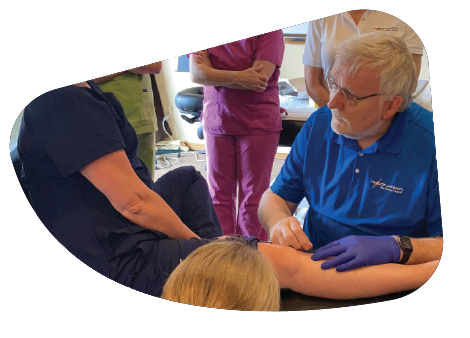
Register for Our Course
Myopain Seminars’ curriculum is developed by international leaders in dry needling and manual trigger point therapy. Our courses are a great way to bring a unique and innovative treatment option to your patients. Completing our course programs elevates your practice and expands your clinician’s toolbox to encompass a wide range of therapies that can effectively eliminate patient pain.
References
- Green S. Systematic reviews and meta-analysis. Singapore Med J. 2005;46(6):270-273; quiz 274.
- Gopalakrishnan S, Ganeshkumar P. Systematic Reviews and Meta-analysis: Understanding the Best Evidence in Primary Healthcare. J Family Med Prim Care. 2013;2(1):9-14.
- Manchikanti L, Datta S, Smith HS, Hirsch JA. Evidence-based medicine, systematic reviews, and guidelines in interventional pain management: part 6. Systematic reviews and meta-analyses of observational studies. Pain Physician. 2009;12(5):819-850.
- Deeks JJ, Higgins JPT, Altman DG. Chapter 10: Analysing data and undertaking meta-analyses. In: Higgins JPT, Thomas J, Chandler J, et al., eds. Cochrane Handbook for Systematic Reviews of Interventions version 6.1 (updated September 2020). Cochrane; 2020.
- Arias-Buria JL, Martin-Saborido C, Cleland J, Koppenhaver SL, Plaza-Manzano G, Fernandez-de-Las-Penas C. Cost-effectiveness Evaluation of the Inclusion of Dry Needling into an Exercise Program for Subacromial Pain Syndrome: Evidence from a Randomized Clinical Trial. Pain Med. 2018;19(12):2336-2347.
- Ries E. Dry Needling: Getting to the Point. In. APTA Magazine. Alexandria: American Physical Therapy Association; 2015.
- Blue Cross Blue Shield of Rhode Island. https://www.bcbsri.com/providers/sites/providers/files/policies/2019/07/2019%20Dry%20Needling%20of%20Myofascial%20Trigger.pdf. Published 2019. Accessed February 22, 2021.
- Blue Cross BlueShield of North Carolina. Corporate Medical Policy – Dry Needling of Myofascial Trigger Points. https://www.bluecrossnc.com/sites/default/files/document/attachment/services/public/pdfs/medicalpolicy/dry_needling_of_myofascial_trigger_points.pdf. Published 2020. Accessed February 22, 2021.
- Centers for Medicare & Medicaid Services. Billing and Coding: Pain Management. https://localcoverage.cms.gov/mcd_archive/view/article.aspx?articleInfo=52863:35. Published 2020. Accessed February 22, 2021.
- Centers for Medicare & Medicaid Services. National Coverage Determination (NCD) for Acupuncture for Chronic Lower Back Pain (cLBP) (30.3.3). https://www.cms.gov/medicare-coverage-database/details/ncd-details.aspx?NCDId=373. Published 2020. Accessed February 22, 2021.
- Military Health System. TRICARE Policy Manual 6010.60-M, April 1, 2015; Revision C-59, February 26, 2020; Section 18.2, Chapter 7, Physical Medicine/Therapy. https://manuals.health.mil/pages/DisplayManualHtmlFile/TP15/59/AsOf/TP15/C7S18_2.html. Published 2020. Accessed February 22, 2021.
- Fernández-De-Las-Peñas C, Plaza-Manzano G, Sanchez-Infante J, et al. Is Dry Needling Effective When Combined with Other Therapies for Myofascial Trigger Points Associated with Neck Pain Symptoms? A Systematic Review and Meta-Analysis. Pain research & management : the journal of the Canadian Pain Society = journal de la societe canadienne pour le traitement de la douleur. 2021;2021:8836427.
- Fernández-de-Las-Peñas C, Pérez-Bellmunt A, Llurda-Almuzara L, Plaza-Manzano G, De-la-Llave-Rincón AI, Navarro-Santana MJ. Is Dry Needling Effective for the Management of Spasticity, Pain, and Motor Function in Post-Stroke Patients? A Systematic Review and Meta-Analysis. Pain Med. 2021;22(1):131-141.
- Navarro-Santana MJ, Gómez-Chiguano GF, Cleland JA, Arias-Buría JL, Fernández-de-las-Peñas C, Plaza-Manzano G. Effects of Trigger Point Dry Needling for Nontraumatic Shoulder Pain of Musculoskeletal Origin: A Systematic Review and Meta-Analysis. Phys Ther. 2020;101(2).
- Sánchez-Infante J, Navarro-Santana MJ, Bravo-Sánchez A, Jiménez-Diaz F, Abián-Vicén J. Is Dry Needling Applied by Physical Therapists Effective for Pain in Musculoskeletal Conditions? A Systematic Review and Meta-Analysis. Phys Ther. 2021.
- Navarro-Santana MJ, Sanchez-Infante J, Fernández-de-Las-Peñas C, Cleland JA, Martín-Casas P, Plaza-Manzano G. Effectiveness of Dry Needling for Myofascial Trigger Points Associated with Neck Pain Symptoms: An Updated Systematic Review and Meta-Analysis. J Clin Med. 2020;9(10).
- Rahou-El-Bachiri Y, Navarro-Santana MJ, Gómez-Chiguano GF, et al. Effects of Trigger Point Dry Needling for the Management of Knee Pain Syndromes: A Systematic Review and Meta-Analysis. J Clin Med. 2020;9(7).
- Griswold D, Wilhelm M, Donaldson M, Learman K, Cleland J. The effectiveness of superficial versus deep dry needling or acupuncture for reducing pain and disability in individuals with spine-related painful conditions: a systematic review with meta-analysis. The Journal of manual & manipulative therapy. 2019;27(3):128-140.
- Pourahmadi M, Dommerholt J, Fernández-de-Las-Peñas C, et al. Dry Needling for the Treatment Of Tension-Type, Cervicogenic, or Migraine Headaches: a Systematic Review and Meta-Analysis. Phys Ther. 2021.
- Navarro-Santana MJ, Sanchez-Infante J, Gomez-Chiguano GF, et al. Effects of trigger point dry needling on lateral epicondylalgia of musculoskeletal origin: a systematic review and meta-analysis. Clin Rehabil. 2020;34(11):1327-1340.
- Sarmiento-Hernandez I, Perez-Marin MLA, Nunez-Nagy S, Pecos-Martin D, Gallego-Izquierdo T, Sosa-Reina MD. Effectiveness of Invasive Techniques in Patients with Fibromyalgia: Systematic Review and Meta-Analysis. Pain Med. 2020;21(12):3499-3511.
- Lew J, Kim J, Nair P. Comparison of dry needling and trigger point manual therapy in patients with neck and upper back myofascial pain syndrome: a systematic review and meta-analysis. Journal of Manual & Manipulative Therapy. 2020:1-11.
- Braithwaite FA, Walters JL, Li LSK, Moseley GL, Williams MT, McEvoy MP. Blinding Strategies in Dry Needling Trials: Systematic Review and Meta-Analysis. Phys Ther. 2019;99(11):1461-1480.
- Dommerholt J, Mayoral O, Thorp JN. A critical overview of the current myofascial pain literature – January 2021. J Bodyw Mov Ther. 2021;25:261-271.
